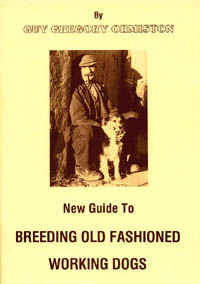Table of Contents
*
Featured Inuit Dog Owner: Ken MacRury, Part 1
*
Remembering Niya
*
Page from the Behaviour Notebook: Bishop and Tunaq
*
Antarctic Vignettes
*
On Managing ISD Aggression
*
The Qitdlarssuaq Chronicles, Part 3
*
News Briefs:
Inuit Dog Thesis Back in Print
Nunavut Quest 2003 Report
Article in Mushing Magazine
Possible Smithsonian Magazine Story
*
Product Review: Dismutase
*
Tip for the Trail: Insect Repellents
*
Book Review: The New Guide to Breeding
Old Fashioned Working Dogs
*
Video Review: Stonington Island, Antarctica 1957-58
*
IMHO: The Slippery Slope
Navigating This
Site
Index of articles by subject
Index
of back issues by volume number
Search The
Fan Hitch
Articles
to download and print
Ordering
Ken MacRury's Thesis
Our
comprehensive list of resources
Talk
to The
Fan Hitch
The Fan
Hitch home page
ISDI
home page
Editor: Sue Hamilton
Webmaster: Mark Hamilton
Contents of The Fan Hitch Website and its publications are protected by international copyright laws. No photo, drawing or text may be reproduced in any form without written consent. Webmasters please note: written consent is necessary before linking this site to yours! Please forward requests to Sue Hamilton, 55 Town Line Rd., Harwinton, Connecticut 06791, USA or mail@thefanhitch.org

The New Guide to Breeding Old Fashioned Working Dogs
by Guy Gregory Ormiston
reviewed by Janice Dougherty
Tucked away in my dog library, there is a small, obscure (in the sense that it is unlikely to be known to the sled dog community) book entitled The New Guide to Breeding Old Fashioned Working Dogs by Guy Gregory Ormiston, printed in 1989. It is only forty-six pages long, but has been subjected to my habit of underlining passages of significance in a greater proportion than any other book I own. Although it is not about sled dogs, specifically, it is about the practical aspects of one person trying to maintain correct, useful, authentic dogs in the modern world of dog dummies. The author's experience with working dogs spanned forty-five years when it was written. I believe that the ISD owners who consider breeding to help maintain a viable genetic pool within the breed could profit from reading the perspectives of those in parallel situations with hunting and livestock dogs, described in this book. Therefore, I would like to share some quotable quotes and concepts printed therein:
• "To become wealthy you would have to sell dogs in volume and that is contradictory to one of the secrets of breeding outstanding working dogs. SECRET: Constant sorting of brood stock is necessary to prevent regression to average performers. You cannot mass-produce sound brood stock."
• "You must be a USER of your own brood stock…You could not cull out the lesser dogs unless you used them under fire, identifying their weakness."
• "Mental traits are inherited exactly like physical traits!"
• "Line breeding and inbreeding will have to be used to maintain any excellence you wish to keep in your strain (but) Never, never, make a cross based solely on compatible pedigrees." [The author goes on to recount his method of developing your own separate strains for the eventually needed outcross.]
• "Breed only based on the abilities of the present couple before you. Working ability is an absolute necessity but secondary to soundness and courage. Care must be taken to never double up on a weakness, but always double up on strength."
• "If the progeny prove inferior, the animal is removed from the breeding program."
• "NEVER UNDERESTIMATE THE IMPORTANCE OF WORKING QUALITY IN YOUR BROOD BITCHES. JUDGE A SIRE ONLY BY HIS GET."
• "To produce a credible strain of working dogs… you must breed dogs that will almost train themselves. They must be dogs that can rise above everything from limited exposure to work/training, to neglect, to abuse, and still make some fashion of a functional working dog. I would say only one potential user out of a hundred is a "real" dog trainer… a person who, first, will take the time to properly train a young dog and, secondly, knows how to go about it… a rare find indeed… Out of a litter of ten pups to a random sampling of users, only about two of those pups would have a fair chance of receiving a proper chance to perform their heritage."
• "If you have something good in the way of a working dog strain, constant wariness is required to avoid losing it."
• "Many a poor soul embarks on a breeding program, with no chance for success simply because this person cannot recognize a top working dog and, therefore, is unable to make intelligent breeding selections. One must study dogs, live with them in the working environment, succeed or fail based on their competence before one can recognize a top performer. Usually these sessions of learning must be lonely vigils."
These ideas are not far removed from the concepts outlined by The American Livestock Breeds Conservancy Manual for dealing with endangered populations. The genetics for maintaining healthy, correct, functional animals, true to their heritage, hold true on both large and small scale - something to consider. Selection is everything: selection of individual dogs, selection of original breeder/source, and selection of placement in future homes.
The New Guide to Breeding Old Fashioned Working Dogs by Guy Gregory Ormiston; $15 USD (includes worldwide postage paid); order from Guy G. Ormiston, Rt.1, Box 181-G, Wynnewood, Oklahoma, USA 73098.